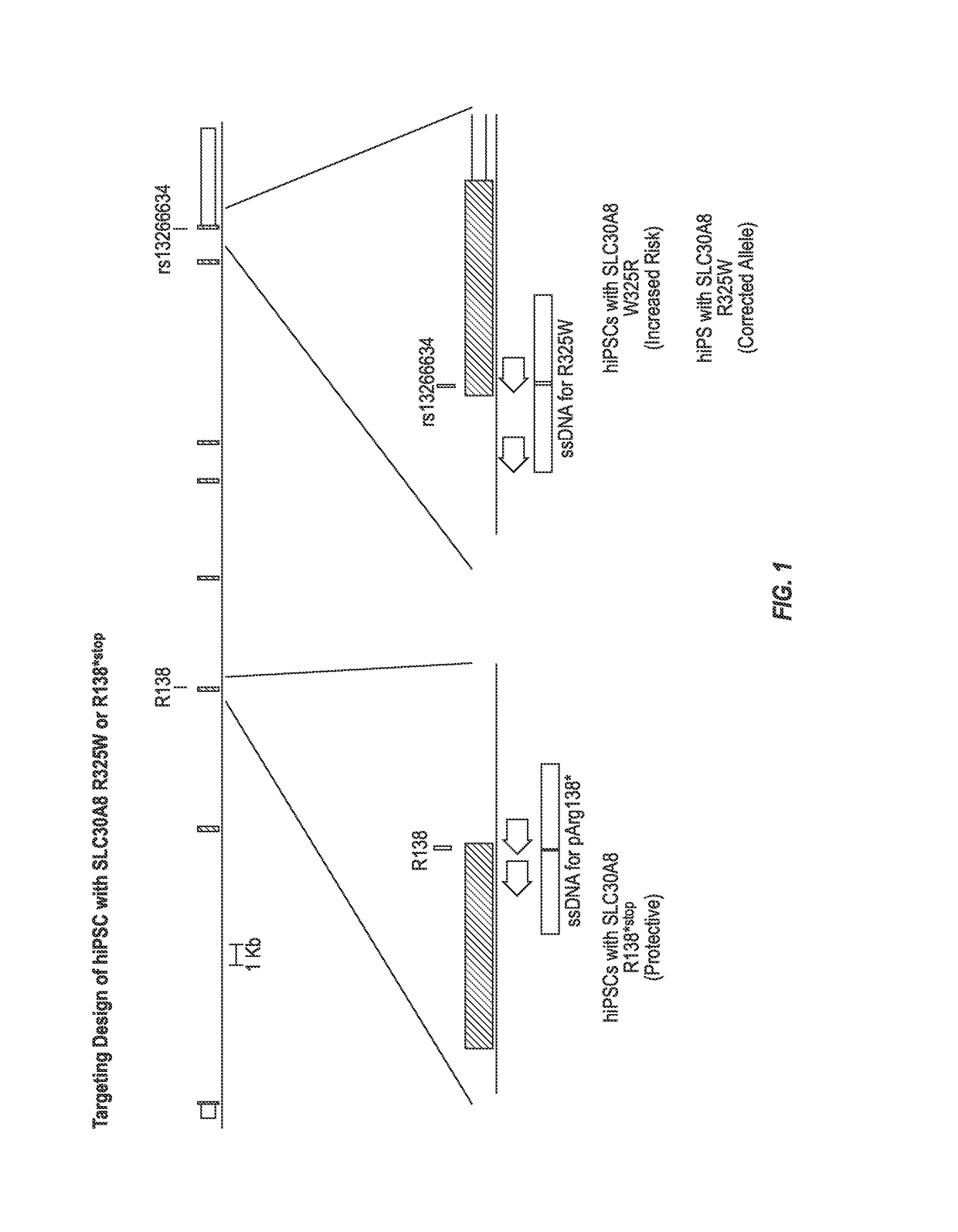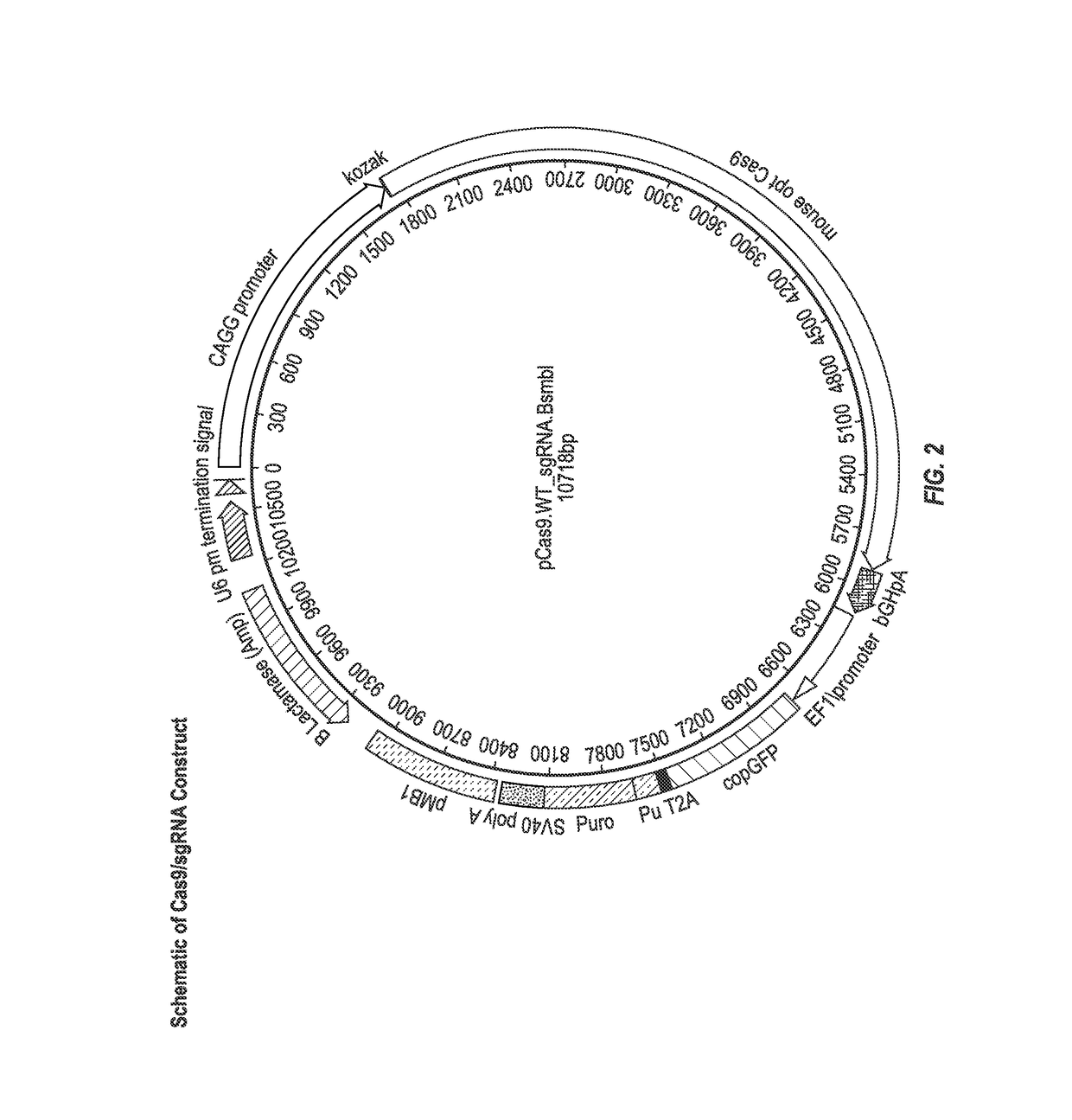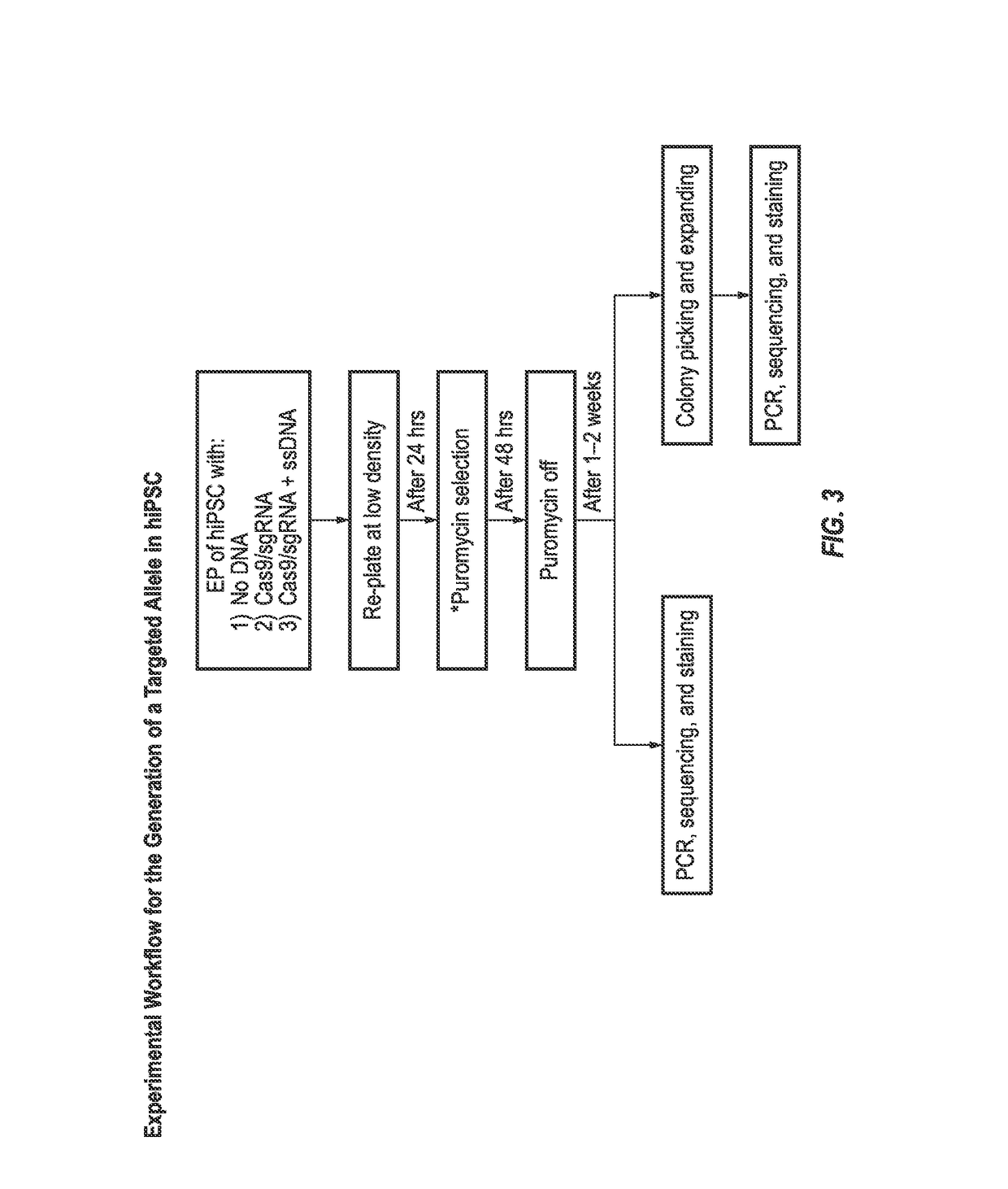Stem cells for modeling type 2 diabetes
a type 2 diabetes and stem cell technology, applied in the field of stem cells for modeling type 2 diabetes, can solve the problems of inability to maintain appropriate blood sugar levels in the body, inability to compensate for the resistance of peripheral tissues to respond, and inability to model t2d diseas
- Summary
- Abstract
- Description
- Claims
- Application Information
AI Technical Summary
Benefits of technology
Problems solved by technology
Method used
Image
Examples
example 1
Introduction of Targeted Mutations in the SLC30A8 Gene into hiPSCs
[0113]This example describes the introduction of targeted mutations in the SLC30A8 gene into hiPSCs.
[0114]hiPSC were electroporated with a vector encoding Cas9 and guide RNA and a puromycin resistance gene and a linear target construct comprising an R138*stop or R325W mutation flanked by homology arms. The starting BJ human foreskin fibroblasts carry the major allele at rs13266634 (cytosine (C)) and thus encode an arginine at position 325 (as determined by Next Generation Sequencing (NGS) at Regeneron). One linear target construct was designed to introduce the minor allele rs13266634 (thymine (T)) and thus encode an arginine to tryptophan substitution at position 325 (R325W) in the SLC30A8 protein. The other linear target construct was designed to introduce a stop codon in the SLC30A8 DNA at the position encoding arginine 138, resulting in the production of a truncated SLC30A8 protein. The Cas9 expression vector compr...
example 2
Generation of Human Induced Pluripotent Stem Cells (hiPSCs)
[0128]This example describes the generation of human iPSCs from BJ human foreskin fibroblasts. A non-infectious (non-packaging) self-replicating Venezuelan equine encephalitis (VEE) virus RNA replicon was used to express transcription factors Oct4, Klf4, Sox2, and Glis1 (VEE-OKS-iG replicon) using the Simplicon RNA Reprogramming Kit (Cat. No. SCR549 and SCR550, Millipore; Yoshioka, N. et al., 2013, Cell Stem Cell 13:246-154). VEE replicon is a positive sense-single-stranded RNA that mimics cellular RNA with a 5′cap and polyA tail. Cells are co-transduced with B18R RNA, which encodes a type 1 interferon-binding protein. Expressed B18R protein, as well as B18R protein added to the medium, suppresses the cellular interferon response.
example 3
Immunohistochemistry to Measure Expression of Pluripotent Stem Cell Markers in hiPSCs
[0129]Human iPSCs were tested for expression of pluripotent stem cell markers Oct 4, Sox2, Nanog, TRA-1-60, and TRA-1-81 using immunohistochemistry.
[0130]Cells were fixed as follows. Aspirate media from wells of 6-well tissue culture plate in which cells as in Example 1 are cultured. Wash 1× with dPBS. Aspirate dPBS. Add 2 ml of 4% PFA (paraformaldehyde) to each well. Incubate 20 minutes at room temperature. Aspirate PFA. Wash 3× with dPBS (2 minutes per wash). Leave the last wash on the cells. Store at 4° C. until ready to use.
[0131]Fixed cells were immunostained with antibodies to stem cell markers Oct 4, Sox2, Nanog, TRA-1-60, and TRA-1-81 and with DAPI for nuclear staining.
[0132]Immunohistochemistry of primed hiPSCs showed expression of Sox2 and Oct 4, both markers of pluripotency.
PUM
| Property | Measurement | Unit |
|---|---|---|
| concentration | aaaaa | aaaaa |
| concentration | aaaaa | aaaaa |
| doubling time | aaaaa | aaaaa |
Abstract
Description
Claims
Application Information
 Login to View More
Login to View More - R&D
- Intellectual Property
- Life Sciences
- Materials
- Tech Scout
- Unparalleled Data Quality
- Higher Quality Content
- 60% Fewer Hallucinations
Browse by: Latest US Patents, China's latest patents, Technical Efficacy Thesaurus, Application Domain, Technology Topic, Popular Technical Reports.
© 2025 PatSnap. All rights reserved.Legal|Privacy policy|Modern Slavery Act Transparency Statement|Sitemap|About US| Contact US: help@patsnap.com



